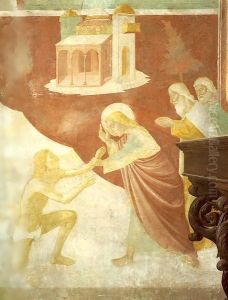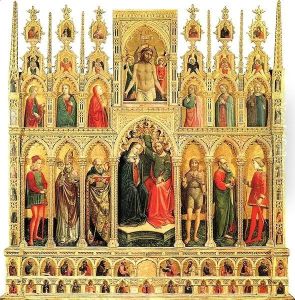Nicolo di Liberatore Paintings
Nicolo di Liberatore, also known as Niccolò Alunno or Nicolò Liberatore, was an Italian painter of the Quattrocento (15th century) period, active primarily in his hometown of Foligno, in the region of Umbria. Born around 1430, Nicolo developed a style that was deeply influenced by the Umbrian school of painting, which was characterized by its devotion to detail, vivid colors, and a preference for religious subjects.
His training and early influences are not well-documented, but it is believed that he might have been a pupil of Bartolomeo di Tommaso, another painter from Foligno. Nicolo di Liberatore's works reflect the transition from the late Gothic style to the early Renaissance. His paintings often included a combination of intricate Gothic ornamentation and a growing interest in perspective and volume, which were becoming prominent in Renaissance art.
One of Nicolo's most notable works is the altarpiece 'Madonna with Child Enthroned', also known as the 'Alunno Altarpiece', created for the church of San Nicolò in his hometown. His other significant contributions include frescoes in the Palazzo Trinci in Foligno and several polyptychs and panels for churches throughout Umbria. His artwork is characterized by expressive figures, a rich palette, and detailed landscapes.
Nicolo di Liberatore's reputation as a master was such that he received commissions from various religious institutions and was actively involved in the vibrant artistic community of Umbria, a region also known for producing other prominent artists such as Piero della Francesca and Perugino. Despite the scarcity of personal details about his life, Nicolo's surviving works provide valuable insight into the art and culture of the Italian Renaissance in Umbria.
Nicolo di Liberatore's death date is not precisely known, but it is generally accepted that he died around 1502. His legacy continued through his influence on the subsequent generations of Italian painters, and his works are still admired for their devotional spirit and artistic craftsmanship.

